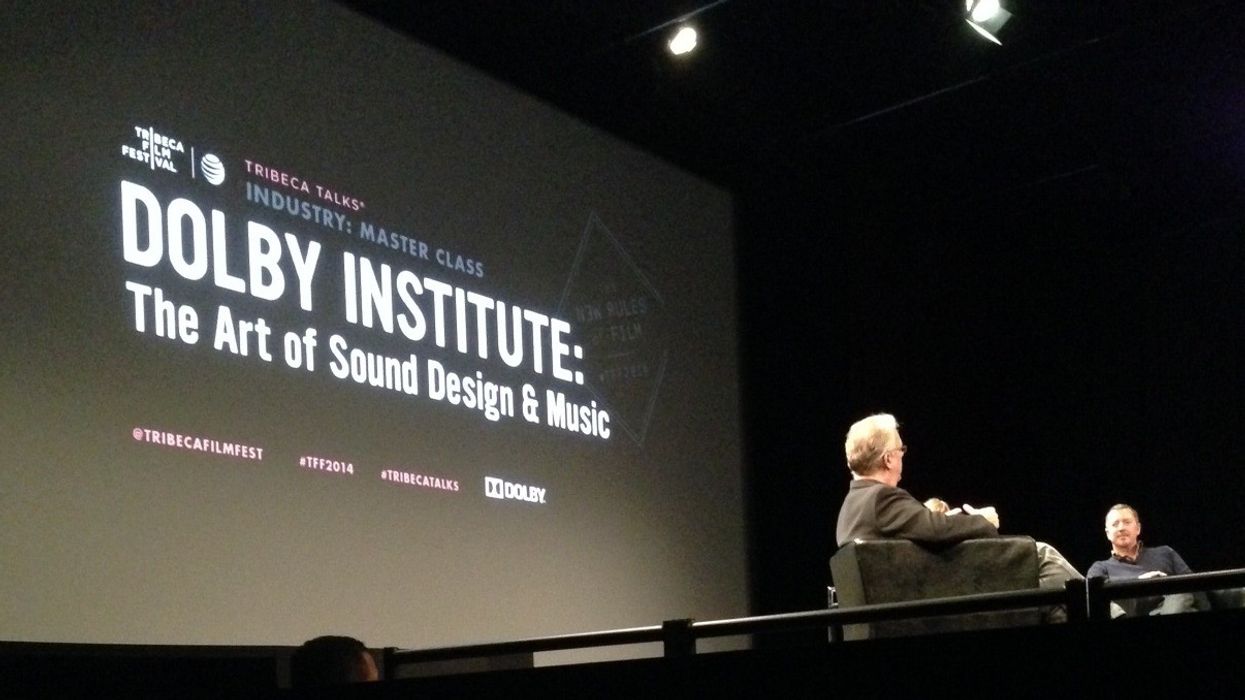Masters of Sound Explain the Art of Music Supervision and Sound Design at Tribeca

Ever since the creation of the talkie, music and sound have been among the most vital elements in filmmaking (and even silent films frequently had live musical accompaniment). As a storytelling device, sound can work magic; just try to think of the shower scene in Psycho without Bernard Hermann's icy string stabs. In a conversation at the Tribeca Film Festival, moderated by Dolby Institute Director Glenn Kiser, Music Supervisor Susan Jacobs (American Hustle, Silver Linings Playbook) and Academy Award winning Sound Editor Skip Lievsay (No Country for Old Men, Gravity) sat down to discuss the business of sound, and its effect on the moviegoing experience. Click through for more!
The Music Supervisor
The right piece of music can make or break a film. Even before the addition of sync sound in the 1920s, many silent films featured live musical accompaniment, and as technology progressed, so too did filmmakers' ability to control not just the image, but the sound of their films. Today, music and sound design are crucial aspects of any film, and a vital part of post production. As any filmmaker knows, watching a film before the score and effects have been added is a totally different experience.
The music supervisor's job involves working with the director, finding and working with the composer, coming up with ideas for songs that might fit, as well as considering marketing and, of course, licensing and rights. Whenever a filmmaker wants to use an existing song in their film, two licenses must be acquired: the Synchronization License, usually obtained from the song's publisher, which grants the filmmakers the right to (that's right) synchronize a given piece of music with their movie. Additionally, a Master Use License, which covers the use of the specific recording of the song, must be obtained, usually through the label (if you don't intend on using Frank Sinatra's version of "My Way," though, this isn't an issue). Additionally, if the song is to be used in a soundtrack album, further rights must be obtained.
Susan Jacobs has provided music supervision for films such as American Hustle, Silver Linings Playbook and Little Miss Sunshine. According to her, each film presents its own challenge. In American Hustle, it was coming up with period music (the film is set in 1980) that matched the tone of the film, everything from Tom Jones to E.L.O.:
According to Jacobs, many directors (especially "indie" directors) find traditional scores "manipulative," and tend to stay away from them as much as possible. This was the case with David O. Russell, and in Hustle, the only traditional score is a short piece composed by Danny Elfman:
Another duty of the music supervisor is to work with the editor in order to find music that fits the tempo, mood, and rhythm of the scene. A song can also play up the theme of a film, as in Blood Simple, the Coen Brother's first film. In that film, "The Same Old Song" by The Four Tops makes several appearances, frequently as practical music, as in this scene:
Until the 1960s, almost all Hollywood films were scored with original orchestral music provided by the studio. Stanley Kubrick was one of the first to use existing classical music as part of his score, partly because he believed that these pieces were better than what he felt was the schmaltzy scores of many films:
Other directors cited as inspirations were Robert Altman, Martin Scorsese and Francis Ford Coppola, all of whom have existing songs in their films to great effect.
Sound Editing and Design
A film without sound editing and design is incomplete. Skip Lievsay, who has worked with Marin Scorsese, Terrence Malick, John Sayles, Jonathan Demme, and the Coen Bros., knows the importance of sound in a film. Last year, he won the BAFTA Award as well an Academy Award for his work on Gravity. In this video, he discusses his work on Alfonso Cuarón's film:
Location sound is usually inadequate, to say the least, and the art of adding sound to a film to enhance atmosphere, highlight characters, or add to suspense (think of the creaking stairs in any horror film) is an art unto itself. Foley artists have a vast array of tools at their disposal:
Just like image technology, sound design has gone digital, and with programs like Pro Tools, indie filmmakers can create an atmosphere that, a few years ago, would have been beyond their grasp.
What do you think? What are some of your favorite movie moments featuring unforgettable songs? What about sound effects? When you're making a movie, how much attention do you pay to sound, and as an indie filmmaker, how do you work around your budgetary constraints to get the effect you need? Let us know!
Link: Tribeca Film Festival

 'Anora'Neon
'Anora'Neon Annie Johnson Kevin Scanlon
Annie Johnson Kevin Scanlon









